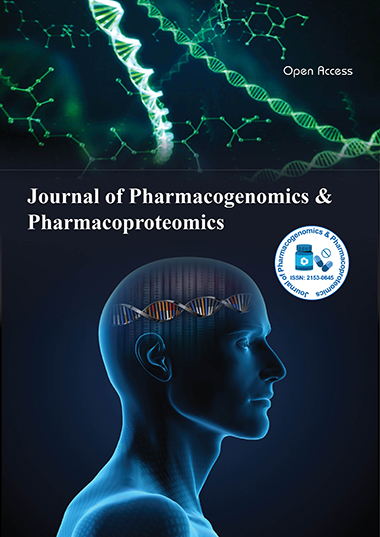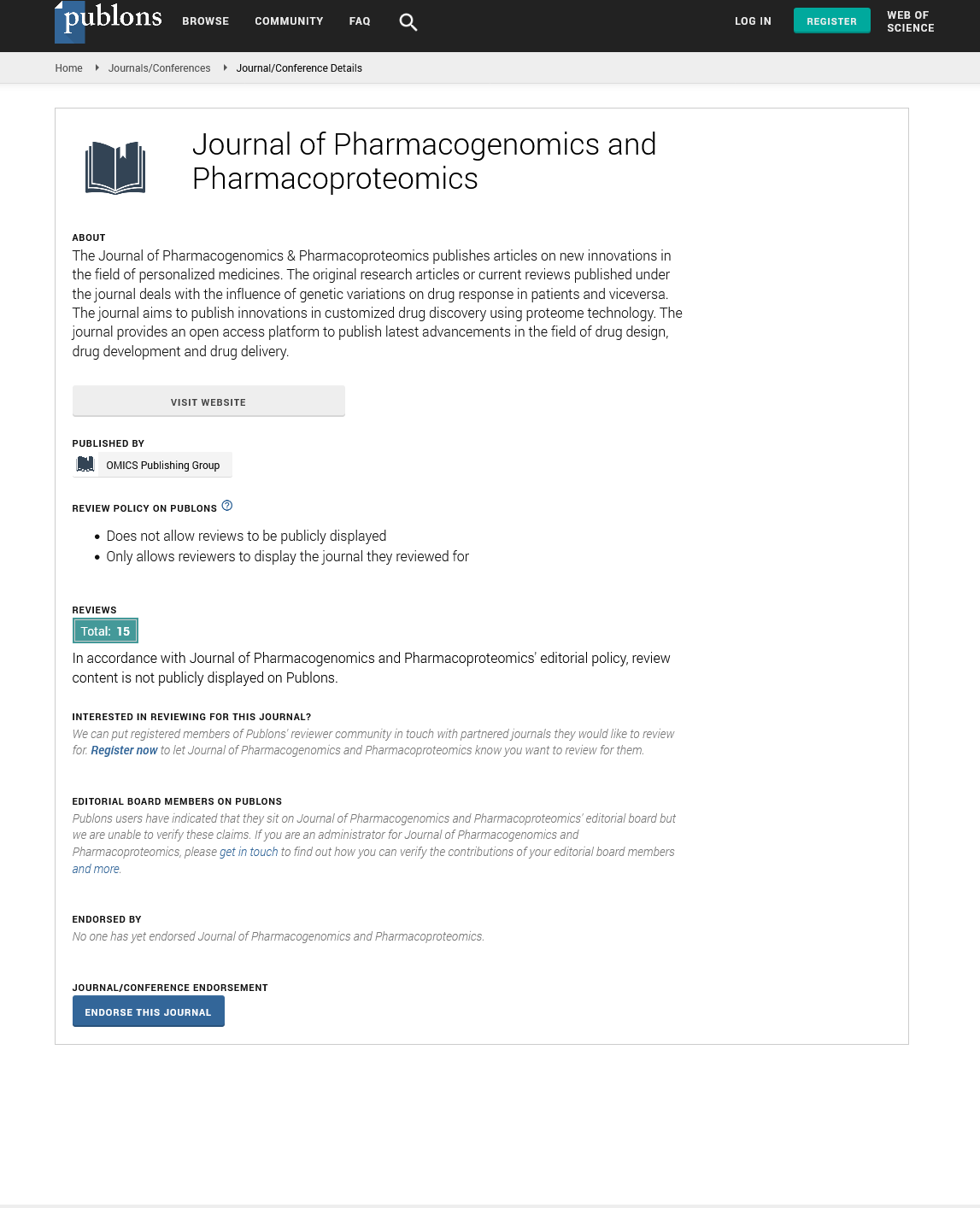Indexed In
- Open J Gate
- Genamics JournalSeek
- Academic Keys
- JournalTOCs
- ResearchBible
- Electronic Journals Library
- RefSeek
- Hamdard University
- EBSCO A-Z
- OCLC- WorldCat
- Proquest Summons
- SWB online catalog
- Virtual Library of Biology (vifabio)
- Publons
- MIAR
- Euro Pub
- Google Scholar
Useful Links
Share This Page
Journal Flyer

Open Access Journals
- Agri and Aquaculture
- Biochemistry
- Bioinformatics & Systems Biology
- Business & Management
- Chemistry
- Clinical Sciences
- Engineering
- Food & Nutrition
- General Science
- Genetics & Molecular Biology
- Immunology & Microbiology
- Medical Sciences
- Neuroscience & Psychology
- Nursing & Health Care
- Pharmaceutical Sciences
Opinion Article - (2025) Volume 16, Issue 1
TPMT and NUDT15 Genetic Variants in Azathioprine Therapy for Autoimmune Disorders
Isabelle Fournier*Received: 26-Feb-2025, Manuscript No. JPP-25-29331; Editor assigned: 28-Feb-2025, Pre QC No. JPP-25-29331(PQ); Reviewed: 14-Mar-2025, QC No. JPP-25-29331; Revised: 21-Mar-2025, Manuscript No. JPP-25-29331(R); Published: 28-Mar-2025, DOI: 10.4172/2153-0645.25.16.129
Abstract
Description
Azathioprine, a thiopurine immunosuppressant, is widely used in the management of autoimmune diseases such as systemic lupus erythematosus, Crohn’s disease and rheumatoid arthritis. Despite its efficacy, its use is limited by the risk of myelosuppression, which may be severe or fatal in certain individuals. The discovery of genetic polymorphisms in thiopurine S-methyltransferase (TPMT) and, more recently, nudix hydrolase 15 (NUDT15), has revolutionized our understanding of thiopurine metabolism and offers a compelling case for pre-emptive pharmacogenetics screening.
TPMT is responsible for the S-methylation of thiopurines, thereby reducing the formation of active cytotoxic metabolites. Genetic variants such as TPMT*2, *3A and *3C lead to decreased enzyme activity, resulting in accumulation of toxic 6- thioguanine nucleotides (6-TGNs) and subsequent myotoxicity. Individuals who are homozygous for low-function alleles are at greatest risk, while heterozygotes may require dose reductions to avoid toxicity.
In European populations, TPMT polymorphisms account for the majority of thiopurine-related adverse events. However, in East Asian populations, TPMT variants are relatively rare. Instead, NUDT15 polymorphisms, particularly the R139C variant (c.415C>T), have emerged as the predominant predictor of thiopurine-induced leukopenia. NUDT15 encodes an enzyme that deactivates thioguanine triphosphates, preventing their incorporation into DNA. Loss-of-function variants result in DNA damage and rapid cell death in hematopoietic precursors.
A multicenter study in Korea and China involving over 1,200 patients with inflammatory bowel disease showed that individuals carrying the NUDT15 R139C variant had a 70-fold higher risk of early-onset leukopenia. In France, where the TPMT*3A allele is more prevalent, a prospective cohort at Lille University Hospital demonstrated that TPMT genotyping reduced hospitalization for myelosuppression by over 60% when used to guide initial dosing.
Current pharmacogenetics guidelines from the CPIC recommend genotype-guided dosing for both TPMT and NUDT15 before initiating thiopurines. Patients with homozygous deficient alleles in either gene are advised to avoid azathioprine altogether, while heterozygotes should start at a reduced dose with close monitoring. These recommendations are gradually being adopted into clinical practice in rheumatology and gastroenterology, particularly in tertiary care settings.
Challenges to implementation include access to rapid genotyping, cost barriers and lack of education among clinicians. However, advances in point-of-care genetic testing and inclusion of pharmacogenomics content in medical curricula are slowly bridging this gap. In the Lille pharmacogenetics lab, same-day TPMT and NUDT15 results are now available, allowing real-time decision-making during outpatient visits.
Pharmacoproteomic analyses further enhance understanding of thiopurine metabolism by quantifying TPMT and NUDT15. These proteomic profiles sometimes reveal discordance with genotype, suggesting post-transcriptional regulation or other modifying factors that may influence enzyme activity. Combining genotyping with protein-level data may lead to more accurate phenotyping in the future.
Moreover, thiopurine therapy is also influenced by other Pharmacogenom such as ITPA and ABCC4, which are under investigation for their role in modulating drug response. Polygenic risk scores integrating multiple variants could provide a more comprehensive assessment of thiopurine tolerance.
TPMT and NUDT15 variants are key determinants of azathioprine-induced myelosuppression and represent a successful example of clinically actionable pharmacogenomics. As testing becomes more accessible, the routine incorporation of these genotypes into treatment planning will significantly enhance patient safety and therapeutic efficacy in autoimmune disease management.
Citation: Fournier I (2025) TPMT and NUDT15 Genetic Variants in Azathioprine Therapy for Autoimmune Disorders. J Pharmacogenom Pharmacoproteomics.16:129.
Copyright: ©2025 Petrova E. This is an open-access article distributed under the terms of the Creative Commons Attribution License, which permits unrestricted use, distribution and reproduction in any medium, provided the original author and source are credited

